
7 minute read
THE TUBBATAHA REEFS – THE PHILIPPINES’ UNESCO JEWELS
THE TUBBATAHA REEFS THE PHILIPPINES’ UNESCO JEWELS
FEATURE AND PHOTOGRAPHY ANTHONY LEYDET | @ANTHONYLEYDET_UW_PHOTOGRAPHY
In the heart of the Coral Triangle, the Philippines archipelago is home to some of the richest marine life on the planet. Under protection for more than 30 years, the atolls of Tubbataha – far from everything in the middle of the Sulu Sea – serves as a sanctuary, with pristine and perfectly healthy coral reefs. This marine reserve, classified as a UNESCO World Heritage Site and swept by ever-present currents, is home to a multitude of pelagic species. With draconian protection, few divers have the privilege of enjoying this jewel, a true model of marine conservation.

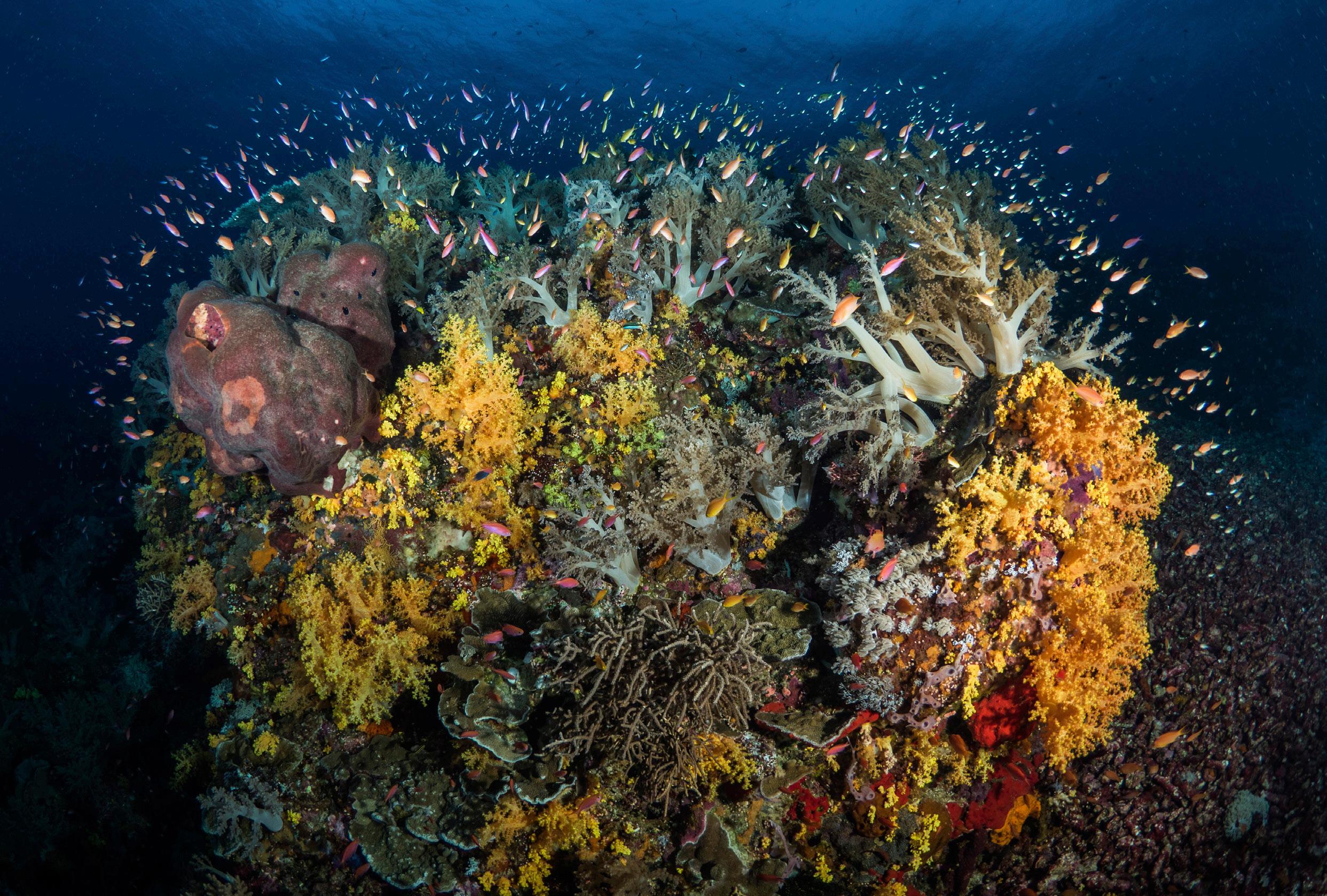

The Sulu Sea is found almost 150 km from the coast of Palawan. The sun is rising and the sky is already full of sublime colours. The horizon is endless and it just about separates the sky from the sea. You can only just make out the outline of the atolls, offering an azure of blue ribbon that seems to stretch over a distance whose end you cannot see. We arrived here, in the middle of nowhere, after sailing for tenhours from Puerto Princesa with its sweaty heat and blazing sun upon us.
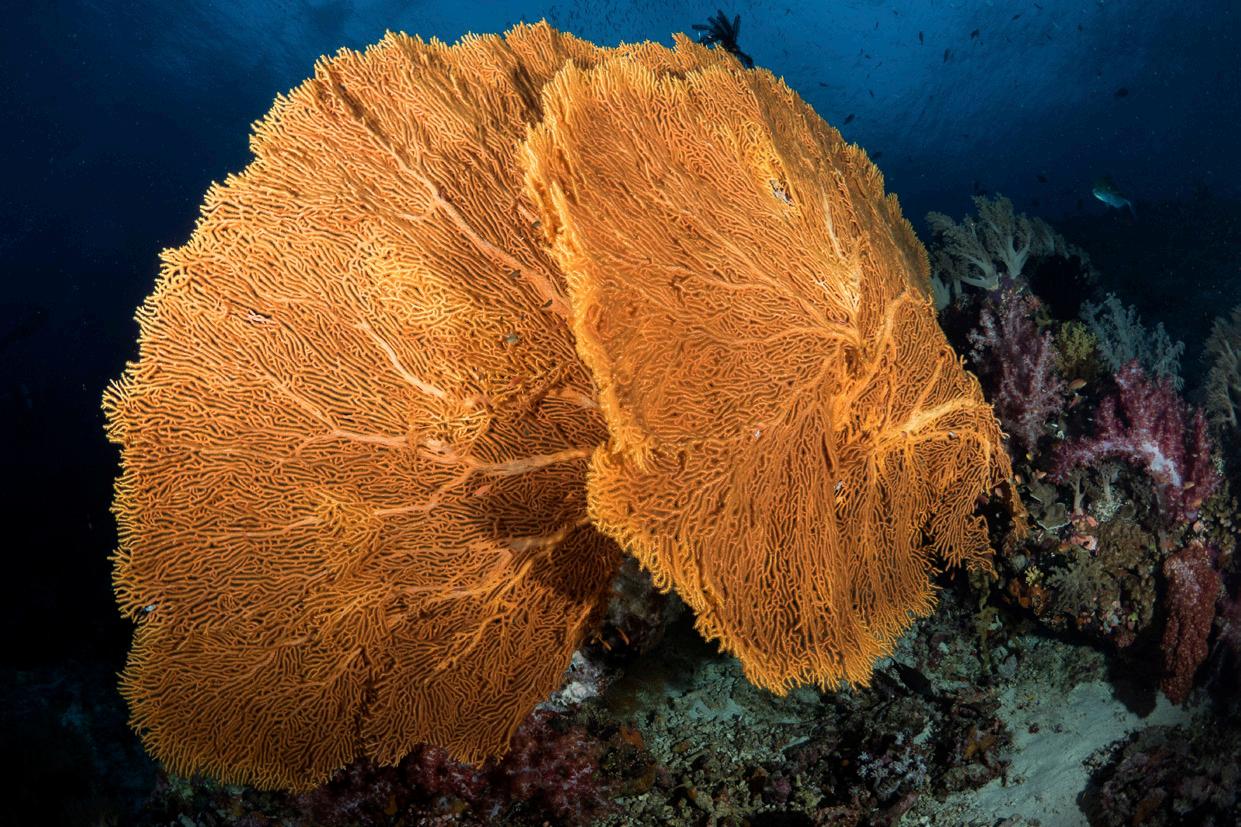
We have arrived at the Tubbataha Reefs Natural Park. Thi is a place full of curiosity since they are the only atolls in the Philippines. Two atolls (North atoll and South atoll) are accompanied by Jessie Beazley’s reef. They are the result of the Cagayan chain’s activity of the now extinct underwater volcanoes. In Sama (spoken in southern Philippines), “Tubbataha” translates to “a long reef exposed at low tide”.
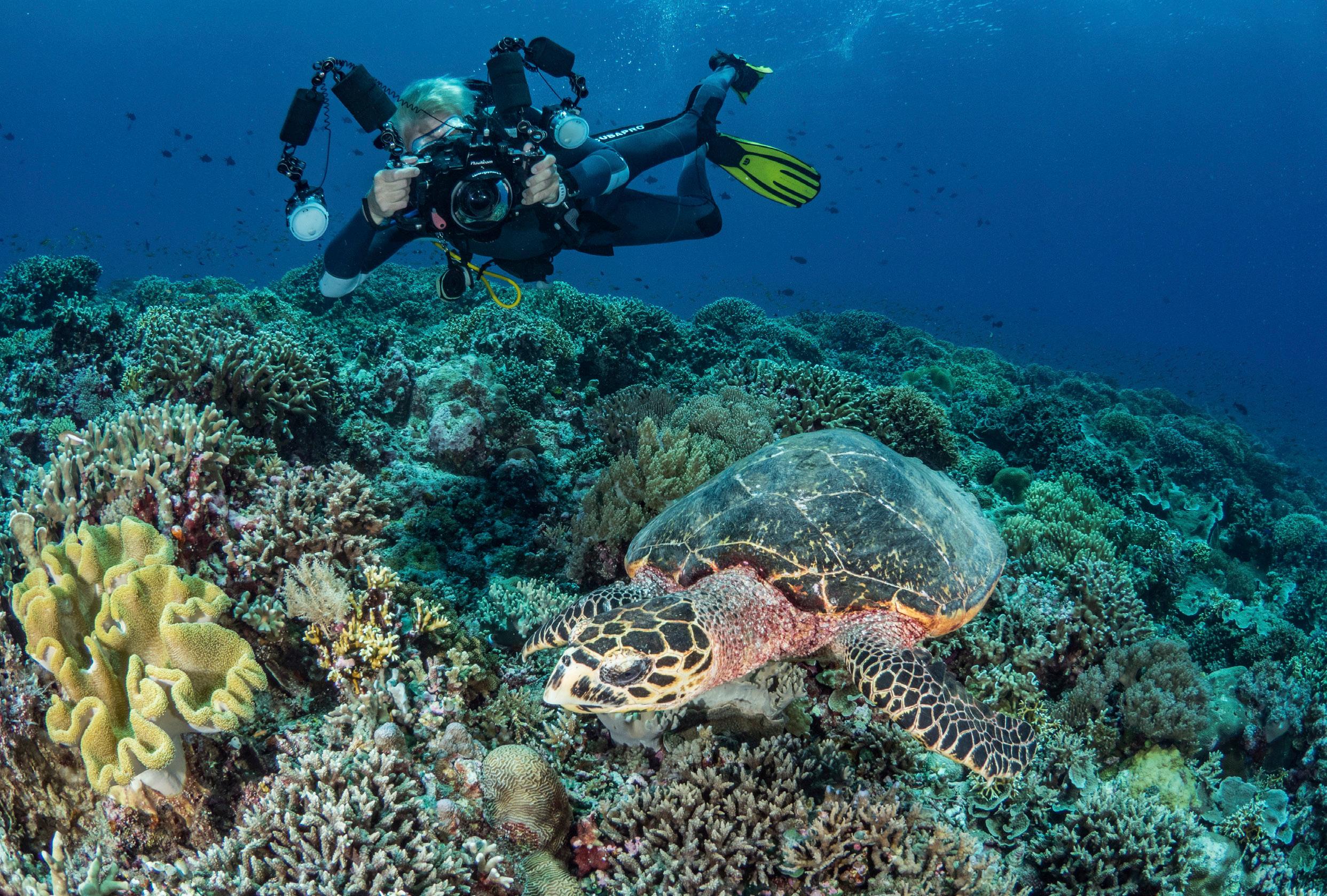
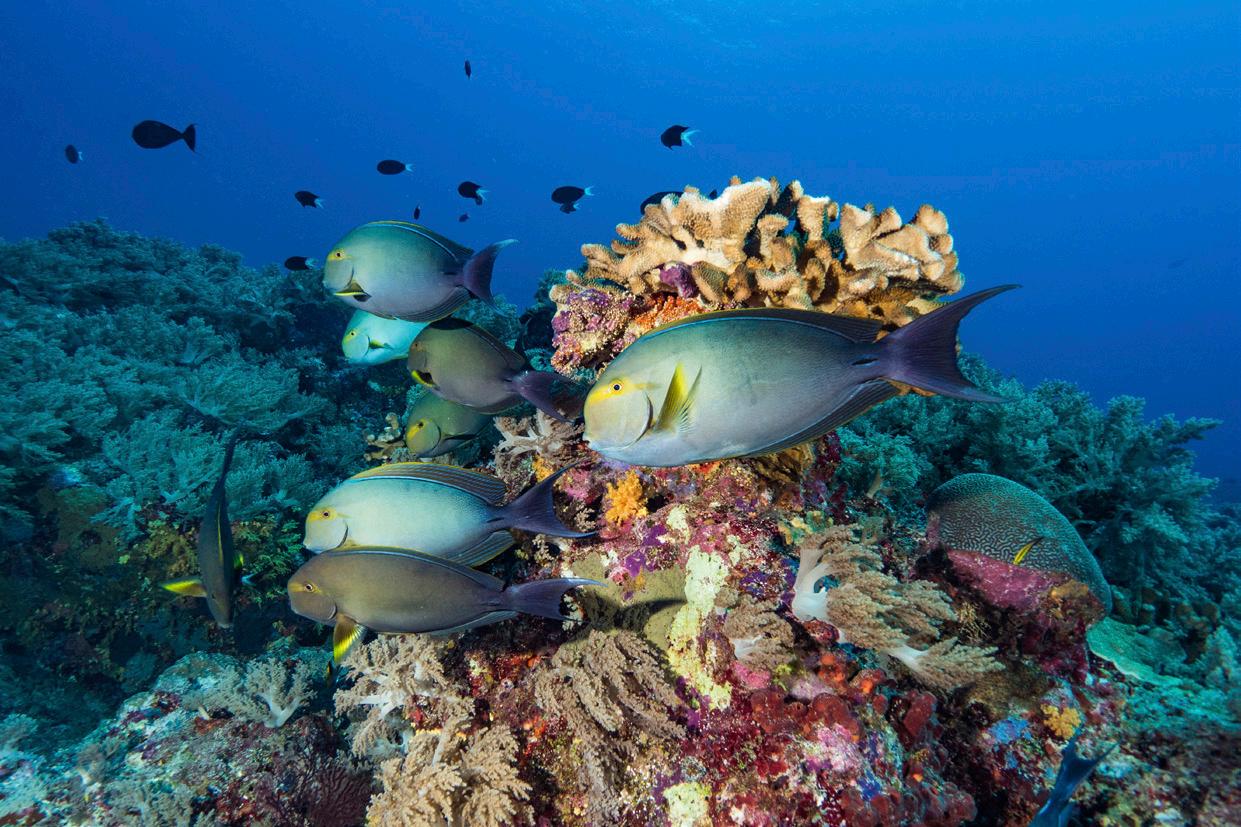
Because of their remoteness from the other islands, these coral reefs have long been protected from overfishing as the boats were not advanced enough to make such a crossing. Unfortunately, with the evolution of fishing boats, the first threats of cyanide and dynamite fishing came, which is incredibly destructive to ecosystems.
The response to protect the site was swift, and it was classified as a marine reserve in 1988. A few years later, in 1993, the atolls of Tubbataha were listed as a UNESCO World Heritage Site. The Tubbataha Reefs Natural Park is delimited by a triangular area of 970 km², an area almost as large as Hong Kong.
DIVING IN TUBBATAHA IS A PRIVILEGE! Diving is only permitted during 3 months of the year, from mid-March to mid-June. The conditions are optimal with a sea that generally resembles the conditions of a lake. There are few boats authorised to access these reefs (less than 20).

In 2019, less than 3,500 divers had the joy of immersing themselves in the waters of Tubbataha to experience this underwater world. In other words, operators and divers must respect the rules to the letter!The diving rules are strict here, and everything is done to ensure that divers have as little impact as possible on the environment. On the first evening, during the crossing, a clear and precise briefing is given by the Discovery Adventure team, the boat that welcomed us from the Discovery Fleet.
No touching, disturbing, or collecting is allowed. The diver must only act as a spectator. Common sense that should be applied everywhere in fact. In addition, it goes even further, because our guides also made it clear to us that no one should ground themselves anywhere underwater. In the end we got used to it, because even as a photographer, I would not have put a finger or a knee onTubbataha’s bottom during my 5 days of diving.
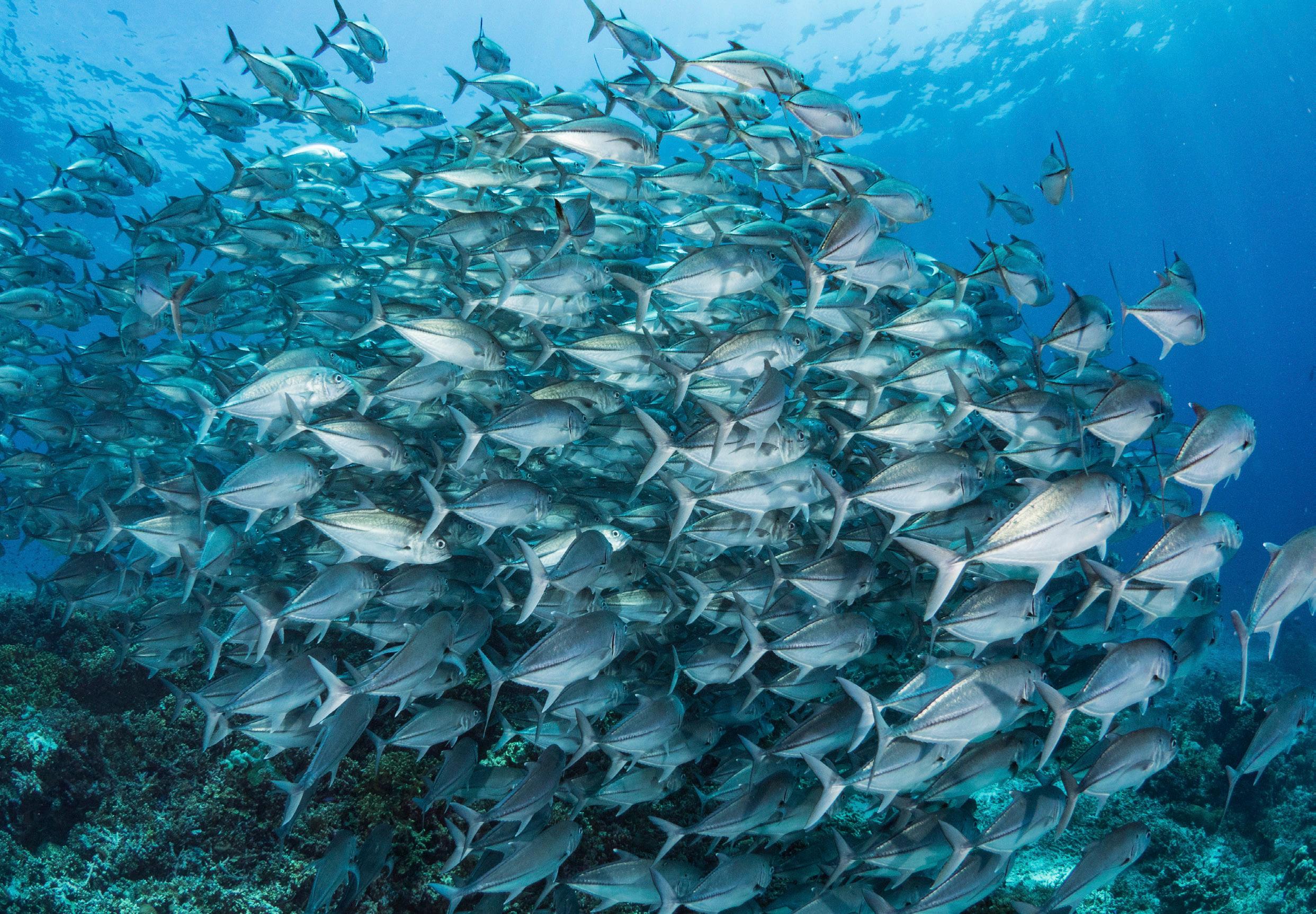
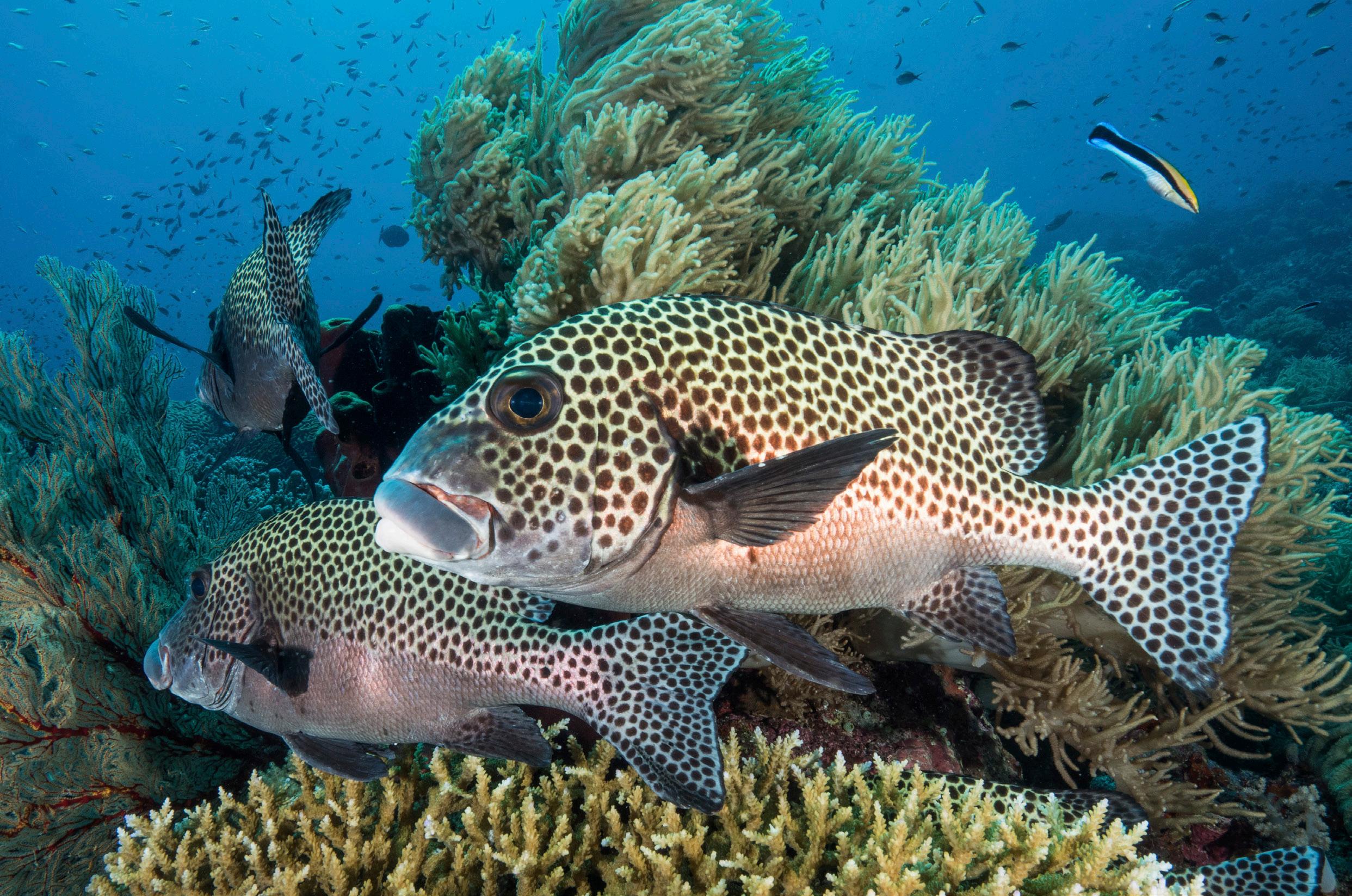

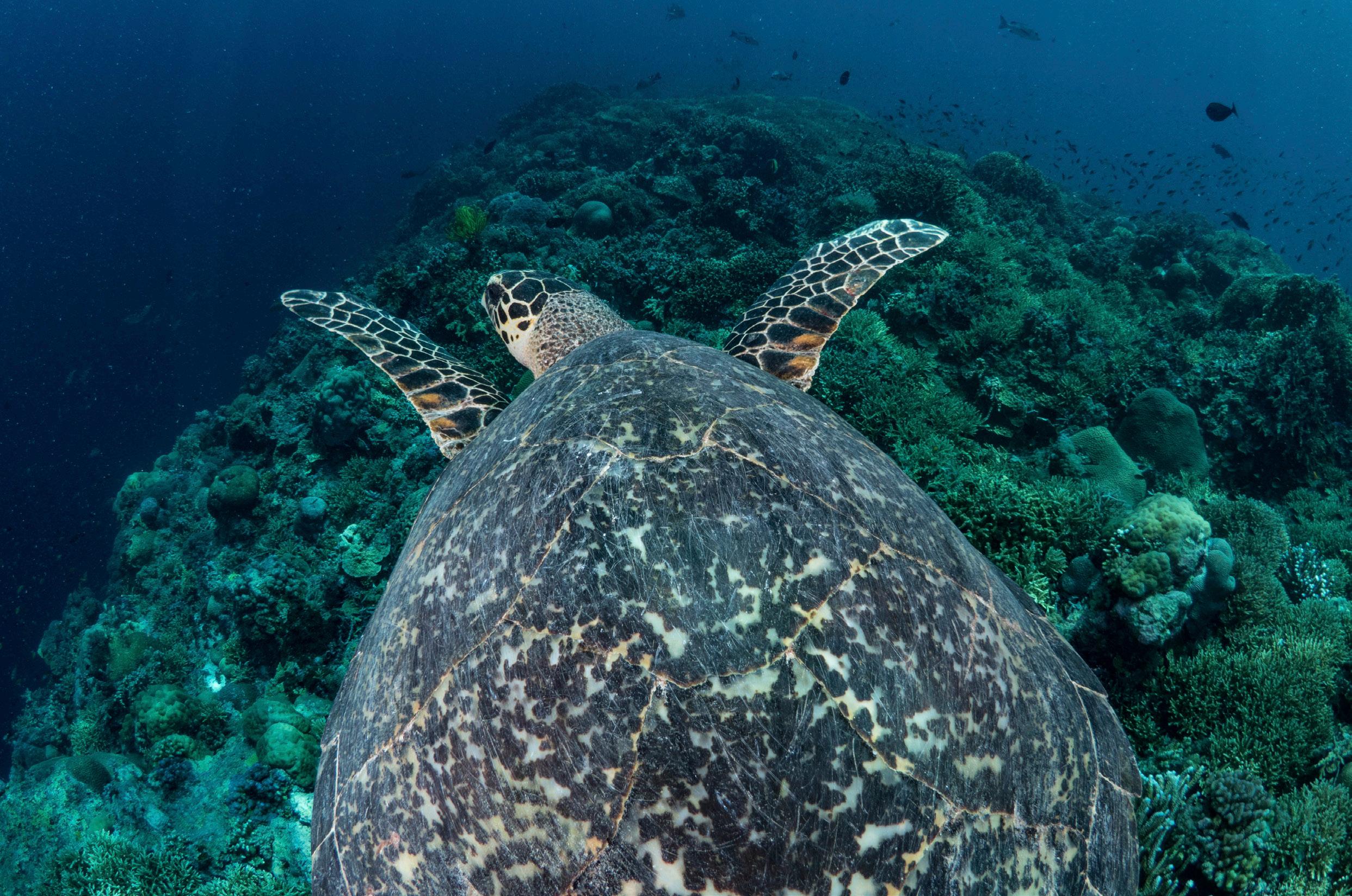

Diving in Tubbataha is therefore an incredible opportunity to observe coral reefs in perfect health and balance. This was incredibly obvious from the first immersion.The underwater life is totally protected and seems fully flourished, and for good reason. Almost half of the world’s known coral species, or more than 360 species out of 800 are found here, as well as 750 species offish.This is the CoralTriangle in all its splendour!
Located far from everything and everywhere else, nature takes over here and once beneath the surface, we no longer know where to look. You need to train your eyes to look in every direction, not only on the reefs, but out to the blue, above your head, or below a drop-off. There is always something to see.
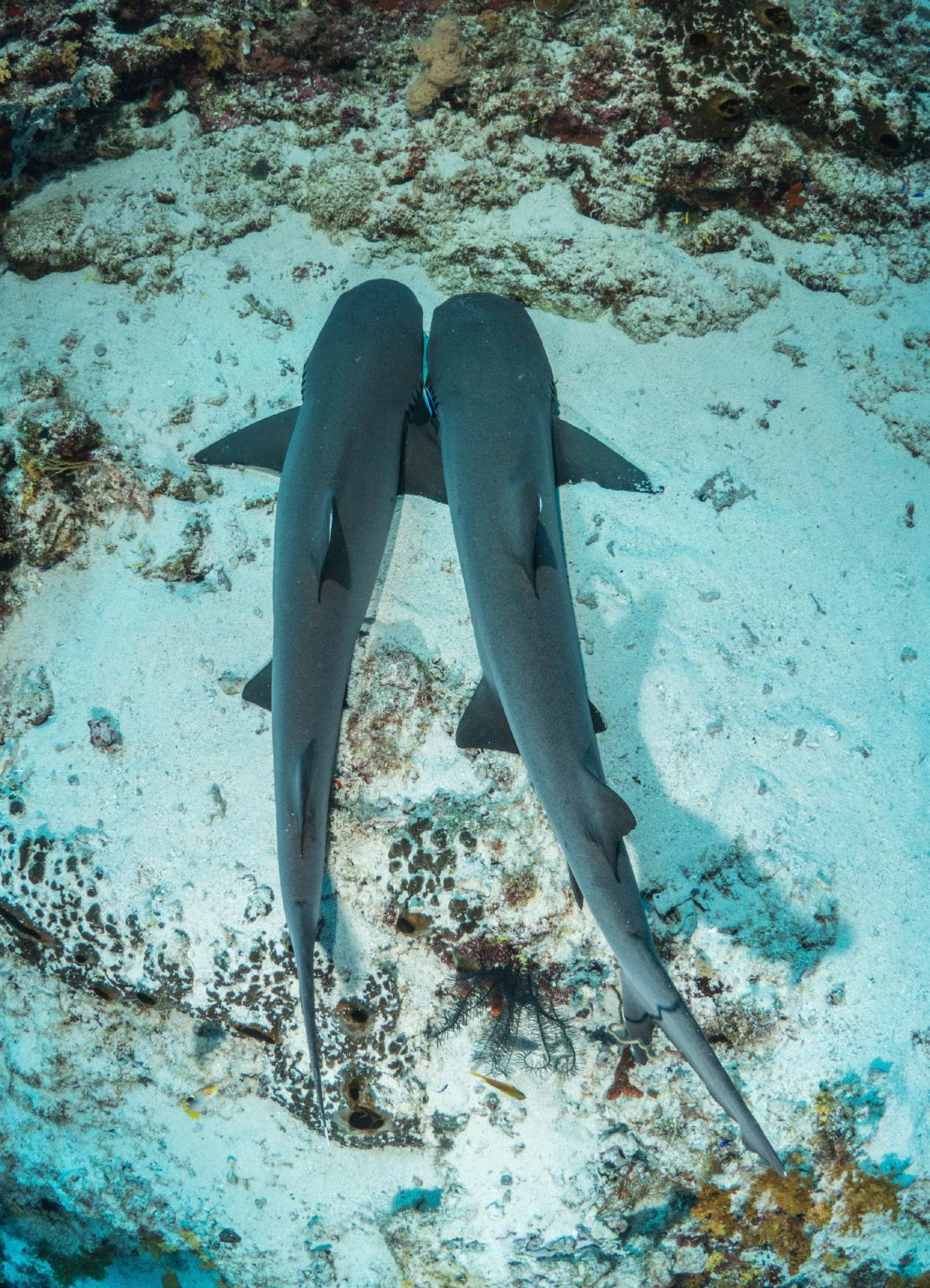
A SHARK SANCTUARY
Sharks are everywhere in Tubbataha where a good dozen species have been recorded. This is exceptional! Even if it is difficult to see as many during 5 days of diving, it’s not impossible. We saw many whitetip reef sharks, blacktip reef sharks, silvertip sharks, grey reef sharks, and of course, the one that attracts the attention of all divers here, the famous whale shark which is very present around these atolls. We were very fortunate to see one on our last dive. It is also common to encounter tiger sharks, thresher sharks, nurse sharks, and even hammerheads. Rays are also present and we had the pleasure of crossing paths with a beautiful reef manta.
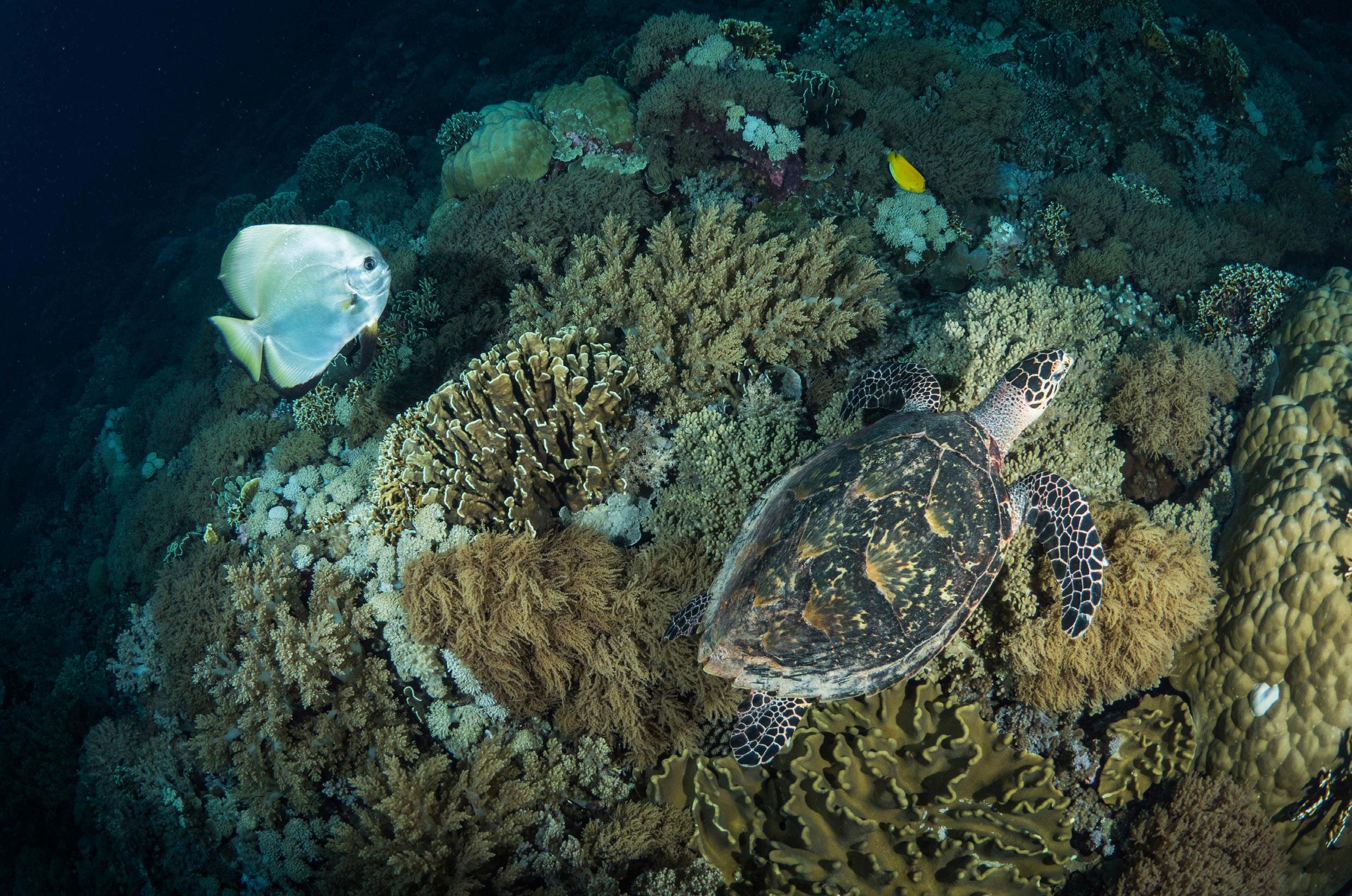
THE RANGERS STATION, TUBBATAHA’S GUARD TOWER
The Tubbataha Natural Park is under the protection of a dozen rangers permanently present on the North atoll. Their base camp is the Rangers Station located on the small sandbank south of the largest atoll. The Tubbataha team, composed of military personnel, coastguards, employees of the Municipality of Cagayancillo, members of the Tubbataha Management Office and divers, is under the leadership of Angelique M. Songco (nicknamed, “Mama Rangers”). Above all, they play a monitoring and repression role against fishermen and poachers venturing into the park. They also conduct scientific studies and run clean-ups when necessary. Sometimes they carry out actions such as the eradication
UNDERWATER MAGIC
Underwater, enchantment is everywhere. The perfectly healthy reefs show all their potential and are full of life. The currents are very present in Tubbataha, and sometimes very strong. Most dives are drift dives, which gives you a view of the entire reef and allows you to see the constant animation. Amidst the corals, or giant gorgonians, the biodiversity is impressive. Fish, in solitary, in small groups or in compact schools, occupy all the spaces for the greatest show we can imagine. The squadrons of jacks or barracudas are a real spectacle. Almost every time we dive, a green turtle or hawksbill turtle peacefully crosses our paths. The presence of a phenomenal amount of juveniles is obvious. Seeing so many napoleon fish or even a gam ofsharks ofsuch small sizes is exceptional!
Even if we don’t come for the big stuff, macro lovers will get their cherry on the cake too: in the south-east of the northern atoll, some gorgonians are the refuge of tiny pygmy seahorses.
PLANNING YOUR TRIP
Diving for 5 days on the reefs of Tubbataha is an exceptional adventure, and a chance to witness successful conservation carried out by theTubbataha Management Office.To extend your stay, there are many options in the Philippines, such as Visayas, Coron, Anilao or Busuanga.

GETTING TO TUBBATAHA
Fly to Manila or Cebu International Airport (recommended, smaller, easier for transfers), there are several airlines to choose from, including Cathay Pacific, or Emirates, and then you need to take a domestic flight with Philippines Airlines.

DIVING LEVEL
Due to some strong currents, divers must be perfectly comfortable with their buoyancy.
LANGUAGE
Filipino is the official language, but English is well spoken everywhere.
CURRENCY
1 USD = 52 PHP (Philippine Peso)
ELECTRICITY
Most liveaboard boats are equipped with 220 volts with international plugs. Check with the company before departure.
DIVE OPERATOR
Discovery Fleet Philippines Tel: +63 2 8 5195674-76 Ext. 328 Message: +63 2 8 4031999 Email: info@discoveryfleet.com www.discoveryfleet.com
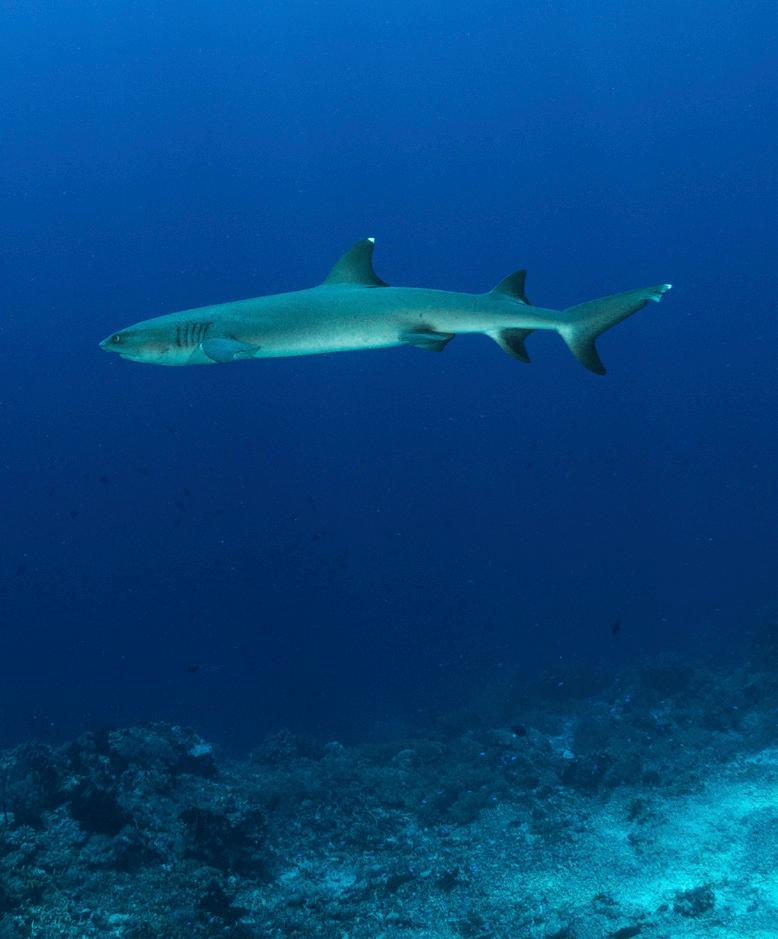
LIST OF ALL THE DIVE OPERATORS
You will find all the dive operators on the Tubbataha Reefs Natural Park website: www.tubbatahareefs.org/dive-operators/










